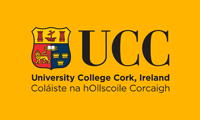News
Japanese Bathing Tradition Contributes To Sharing Of Gut Microbes Amongst Family Members
Japanese Bathing Tradition Contributes To Sharing Of Gut Microbes Amongst Family Members
Japanese Bathing Tradition Contributes To Sharing Of Gut Microbes Amongst Family Members

New Research Showing That The Japanese Bathing Practice May Promote Transfer Of Gut Microbes Amongst Family Members Had Just Been Published By Scientists At Morinaga Milk Industry Ltd In Collaboration With The APC Microbiome Ireland SFI Research Centre In Scientific Reports.
According to commonly held views, Bifidobacterium is found as a dominant part of the gut community of vaginally delivered newborns and the acquisition of maternal gut strains firstly occurs during passage through the birth canal (mother-to-child transmission). A number of studies have shown transmission of gut microbes from mother to newborn at a very early stage of life. However, from a study conducted together with APC in January 2018, researchers identified bifidobacterial strains which appear to have been shared across three generations of family members. The study also suggests that there is a possibility that Bifidobacterium can be transferred not only from mother to child but within family members such as husband to wife, father to child (from the study entitled “Genomic diversity and distribution of Bifidobacterium longum subsp. longum across the human lifespan” also published in Scientific Reports in early 2017).
In Japan, bathing has been a family tradition, as evidenced by the popularity of the hot spring culture, where Japanese people spend quality time together with their friends and family in public bathing facilities. In addition, many families also bath together at home. For this study, Morinaga Milk wanted to investigate if this unique Japanese bathing tradition represents a possible transmission route that facilitates transfer of gut microbes across family members.
Study Design
Initially, five Japanese families whose members bath together were enrolled in the study. Bathtub water was collected and the microbiota was isolated and analyzed. Also, fecal samples from each member of 5 families (total 21 people) were collected and gut microbes were isolated and analyzed. Next, the gut microbes from 11 families (43 people) whose family members bathed together and from 5 families (16 people) whose family members did not follow this bathing tradition (i.e. took individual baths) were analyzed as well.
Study Results
1. Bath water-derived strains had originated from gut microbes
After filtration of bath water from the 5 families which took baths together, bacteria captured by the filter were assessed. From all these bath water samples, viable bifidobacteria were identified (Fig. 1). Genome sequences of a total of 98 strains (both filtered Bifidobacterium strains and Bifidobacterium strains isolated from the fecal samples of subjects) were compared. Among 19 strains isolated from bathtub water, 12 strains were shown to contain a near identical gene content.
2. Fecal microbiota between family members who are taking a bath together is similar
Gut microbes of 11 families (43 people) whose parents and children will bath together and 5 families (16 people) which bath alone were compared. Our results demonstrated that more microbes (other than Bifidobacterium) were shared among the family members who bathed together as compared to those families who did not follow this tradition (Fig. 2).
Considering the above mentioned results, we may conclude that the unique Japanese tradition of bathing together is contributing to gut microbe transmission amongst family members.
“The results of this study provides a hint of how environmental factors and cultural habits may influence gut colonization. This should be taken into consideration for future studies. Many studies show that gut microbes are related to several diseases and obesity so keeping a good balance of gut microbes is the key to a healthy live. Such a balance can be achieved by using food supplements and maintaining a healthy diet, and our work shows that this will not only benefit individuals but that it may benefit those around us as well”, said Dr. Toshitaka Odamaki, Section Manager of Microbiota Research, Next Generation Science Institute in Morinaga Milk.
Full reference: “Impact of a bathing tradition on shared gut microbes among Japanese families”. Toshitaka Odamaki, Francesca Bottacini. Eri Mutsuyama, Keisuke Yoshida, Jin-zhong Xiao & Douwe van Sinderen 2019 Article | OPEN | Published: 13 March 2019 Scientific Reports volume 9, Article number: 4380 (2019) https://www.nature.com/articles/s41598-019-40938-3

Fig. 1 Bifidobacteirium detection from after bath water

Fig. 2 Sharing gut microbes between family members of bathing together and bathing alone.
- , Distant between each family
―, Average for each group


